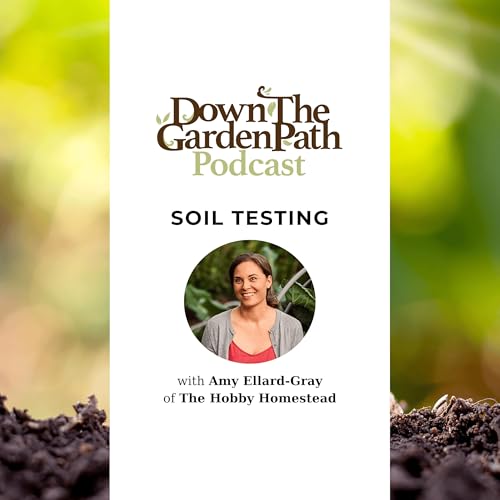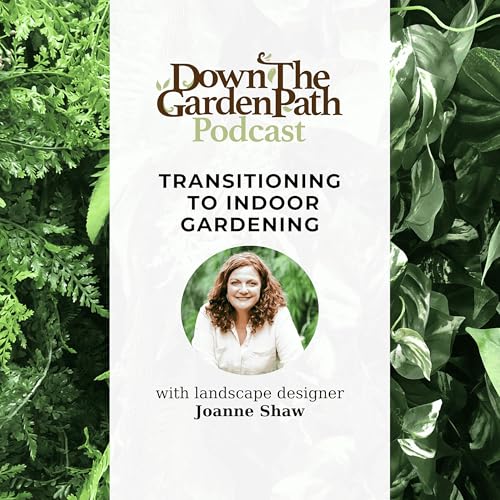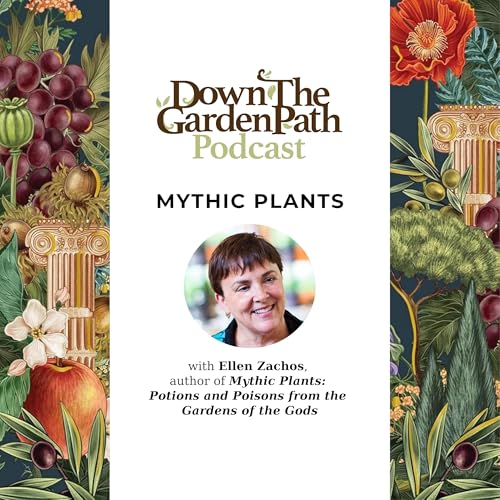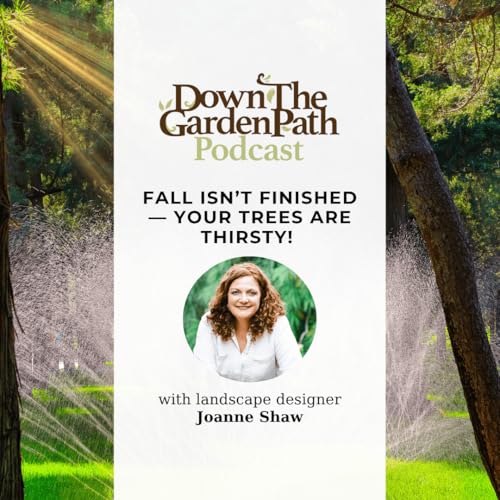This week on the podcast, Joanne discusses soil testing with The Hobby Homestead's Amy Ellard-Gray, who grows 75% of her family's fruits and vegetables in her Guelph backyard. About Amy Amy runs The Hobby Homestead in suburban Guelph, where she cultivates over 100 varieties of native plants to support the local ecosystem. Through her YouTube channel, Instagram, website, and in-person consultations, she helps people design and troubleshoot their own food-growing spaces. Her mantra, "growing food in harmony with nature," guides everything she does, from tending soil life to welcoming wildlife into the garden. Topics discussed in this episode: "How much compost is too much?" Amy questioned the popular "just pile on compost" / no-dig approach (e.g., growing directly in municipal compost).After consulting an agronomist, she learned you can overdo compost, especially because compost often has high soluble salts that can stress plants.General rule of thumb from the agronomist: for established beds, about ½ inch (1 cm) of compost as a top-dressing per year is usually enough, but every garden is different. Why test compost and soil? Amy now plans to lab-test her own compost (about $20) for salts and nutrients before using it widely.Lab tests are often similar in price to store-bought kits and usually include a quick consult to interpret results.Soil tests are especially valuable for: New builds or new-to-you properties.High-value plants (e.g., Japanese maples, fruit trees).Chronic problem areas like failing lawns or veggie beds. Home test kits vs lab tests Simple garden-center test kits can be unreliable, especially if old or poorly stored.Nitrogen is hard to test accurately because it changes quickly in the soil; even lab reports often base nitrogen recommendations on plant symptoms, not just numbers.Labs can tailor tests to what you're growing (lawn, ornamentals, vegetables, etc.). pH: the quiet troublemaker Amy's big lesson: pH controls nutrient availability. Low pH can lock up phosphorus.High pH (common in parts of Ontario) ties up iron, manganese, and zinc. Just adding fertilizer won't help if pH is off and plants can't actually access those nutrients.Raising pH with lime is relatively straightforward; lowering pH (for blueberries/azaleas) is hard, requires repeated sulfur, and soil tends to drift back—Amy has nearly given up on blueberries because of this. Choosing soil: bulk vs bags, municipal compost Amy strongly prefers high-quality bulk triple mix from a trusted supplier (often with nutrient analysis available).She's wary of: Bagged soil/compost of unknown origin, age, and quality.Municipal compost giveaways, due to uncertain inputs (treated lawns, herbicides, diseased plants) and inconsistent processing. Leftover bulk soil gets used in pots, extra beds, or stored for future top-ups—she never feels like she has "too much soil." Building and maintaining soil in raised beds & pots Raised beds: start with good triple mix, then top up yearly with a thin layer of compost and mulch (leaves, straw, chop-and-drop).Containers: use potting mix or triple mix plus perlite for drainage; reuse soil but amend and top up rather than dumping it every year.She only uses extra fertilizer (like fish emulsion) when pushing density in containers (e.g., many beets in a small pot). Rotation, disease, and "messy" gardens Classic crop rotation is more critical at farm scale; in small backyards, many diseases are airborne, so simply shifting crops a few feet often doesn't prevent them.Rotation still matters for certain soil-borne diseases (Amy rotated tomatoes after Alternaria collar rot), but it's not the magic solution some make it out to be.Leaving more plant material, leaves, and roots in place supports soil life and natural pest-predator balance, instead of resetting everything with a "clean" fall garden. Amy's message for gardeners Shift your mindset from "feeding the plants" to "feeding the soil."Healthy, living soil is what ultimately feeds healthy, productive plants. Find The Hobby Homestead at www.thehobbyhomestead.com and on Instagram and YouTube. Resources Mentioned in the Show: Down the Garden Path: A Step-By-Step Guide to Your Ontario Garden Are you a landscape or gardening expert? We'd love to have you on the show! Click here to learn more. Find Down the Garden Path on Instagram, Facebook, and YouTube: @downthegardenpathpodcast. Down the Garden Path Podcast On Down The Garden Path, professional landscape designer Joanne Shaw discusses down-to-earth tips and advice for your plants, gardens and landscapes. As the owner of Down2Earth Landscape Design, Joanne Shaw has been designing beautiful gardens for homeowners east of Toronto for over a decade. She does her best to bring you interesting, relevant and useful topics to help you keep your garden as low-maintenance as possible. In Down the Garden Path: A Step-By-Step Guide to Your Ontario Garden, Joanne and fellow landscape designer Matthew Dressing ...
Show More
Show Less
 Nov 25 202551 mins
Nov 25 202551 mins Nov 11 202528 mins
Nov 11 202528 mins Nov 4 202542 mins
Nov 4 202542 mins Oct 28 202542 mins
Oct 28 202542 mins Oct 21 202524 mins
Oct 21 202524 mins Oct 15 202517 mins
Oct 15 202517 mins Oct 6 202528 mins
Oct 6 202528 mins Oct 1 202517 mins
Oct 1 202517 mins

